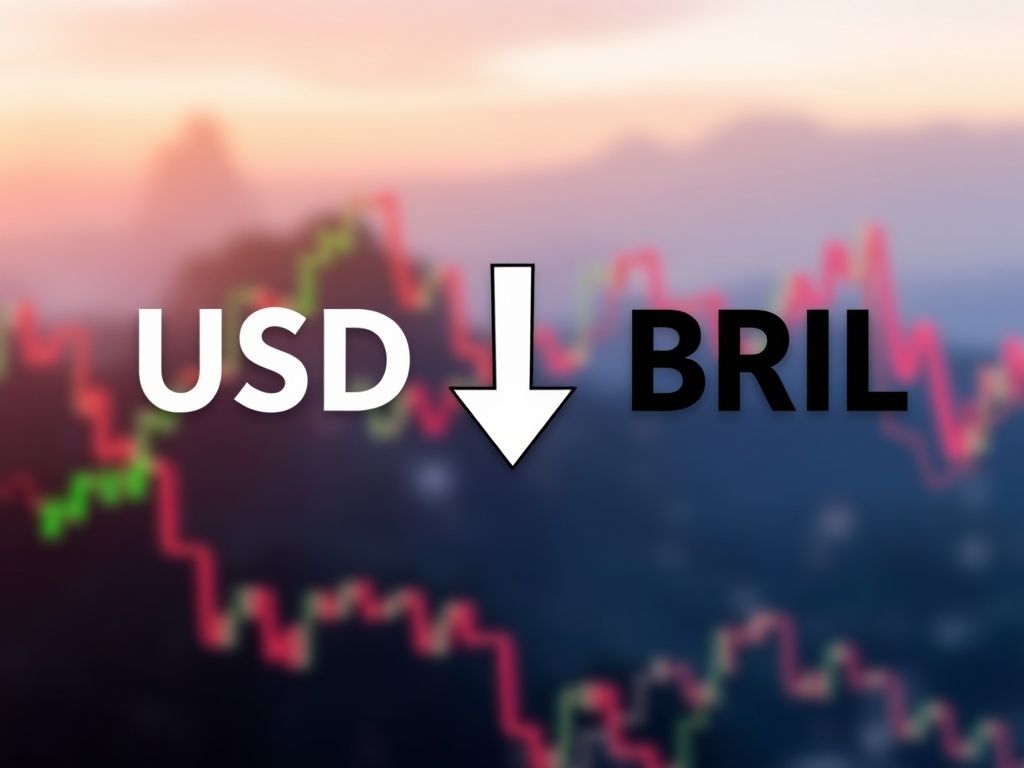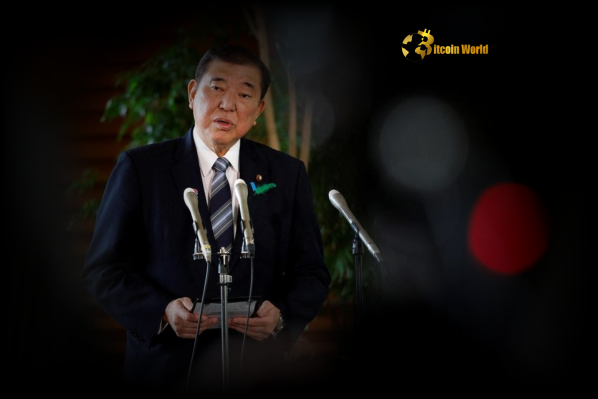BitcoinWorld

Brazilian Real Faces Alarming Underweight Call from BCA: What Investors Must Know
In a world where digital assets often grab headlines, the traditional forex market continues to offer critical insights into global economic health. For many investors, particularly those accustomed to the rapid shifts in cryptocurrency markets, understanding the dynamics of national currencies like the Brazilian Real is paramount. Recently, BCA Research, a prominent independent global investment research firm, issued a significant advisory: an underweight position on the Brazilian Real. This isn’t just a technical financial term; it’s a strong signal about the future trajectory of one of Latin America’s largest economies and its currency. What does this expert forecast mean for your investment portfolio, and why should you pay close attention?
Why is the Brazilian Real Under Pressure?
The recommendation to underweight the Brazilian Real stems from a complex interplay of domestic and international factors. An “underweight” position suggests that investors should hold less of an asset than its typical proportion in a diversified portfolio, anticipating a decline in its value or underperformance relative to other assets. For Brazil, this outlook is influenced by several key economic and political challenges:
- Fiscal Concerns: Persistent worries about Brazil’s public debt and government spending continue to cast a long shadow. High fiscal deficits often lead to inflation and erode investor confidence, making the currency less attractive.
- Inflationary Pressures: Like many global economies, Brazil has grappled with elevated inflation. While the central bank has aggressively raised interest rates to combat this, the lingering effects on consumer purchasing power and business investment are notable.
- Political Instability: Brazil’s political landscape has historically been volatile, and recent developments often add to market uncertainty. Policy shifts, regulatory changes, and electoral cycles can all impact investor sentiment towards the Real.
- Commodity Price Volatility: As a major exporter of commodities like iron ore, soybeans, and crude oil, Brazil’s economy and currency are highly sensitive to global commodity price fluctuations. A downturn in these prices can directly weaken the Real.
Understanding these underlying pressures is crucial for anyone looking to navigate the intricacies of the forex market.
Navigating the USD/BRL Exchange Rate: Key Drivers
The USD/BRL exchange rate is a barometer of Brazil’s economic health relative to the United States. When BCA recommends an underweight position on the Brazilian Real, it implies an expectation for the USD to strengthen against the BRL, meaning it would take more Reals to buy one U.S. Dollar. Several factors consistently drive this pair:
- Interest Rate Differentials: The difference between interest rates offered by the Brazilian Central Bank (Selic rate) and the U.S. Federal Reserve (Fed Funds rate) significantly influences capital flows. If the rate differential narrows or reverses in favor of the USD, capital tends to flow out of Brazil, weakening the BRL.
- Global Risk Appetite: During periods of global economic uncertainty or risk aversion, investors often flock to safe-haven currencies like the U.S. Dollar. This “flight to safety” can put downward pressure on emerging market currencies, including the BRL.
- Trade Balance and Foreign Direct Investment (FDI): A strong trade surplus and robust FDI inflows generally support the BRL, as they increase demand for the currency. Conversely, deficits or reduced investment can weaken it.
- U.S. Economic Data: Strong U.S. economic performance, particularly employment and inflation data, can prompt the Federal Reserve to adopt a more hawkish monetary policy, strengthening the USD and impacting the USD/BRL pair.
Monitoring these drivers provides a clearer picture of potential movements in the USD/BRL exchange rate, enabling more informed decisions.
Broader Implications for Emerging Market Currencies
The BCA recommendation for the Brazilian Real is not an isolated event; it often reflects or foreshadows broader trends impacting Emerging Market Currencies (EMCs). Brazil is a significant player in the EM space, and its currency’s performance can have ripple effects. A negative outlook on the BRL might signal:
- Contagion Risk: Weakness in one major emerging market currency can sometimes spill over into others, especially those with similar economic structures or vulnerabilities. Investors might broadly re-evaluate their exposure to the asset class.
- Global Capital Flows: If investors are pulling capital out of Brazil due to perceived risks, they might also reduce exposure to other EMCs, leading to broader currency depreciation across the segment.
- Differentiated Performance: While some EMCs might face similar headwinds, others with stronger fundamentals, diversified economies, or more stable political environments might prove more resilient. Investors need to differentiate.
Here’s a conceptual look at how different emerging markets might compare, highlighting the diverse landscape within EMCs:
| Country/Currency | Key Economic Strength | Current Challenge | BCA-like Outlook (Conceptual) |
|---|---|---|---|
| Brazil (BRL) | Commodity Exports, Large Domestic Market | Fiscal Deficits, Inflation, Political Uncertainty | Underweight |
| Mexico (MXN) | Proximity to US, Manufacturing Hub | Inflation, Energy Sector Policies | Neutral/Slightly Positive |
| India (INR) | Strong Domestic Demand, IT Services | Global Slowdown Impact, Inflation | Neutral |
| South Africa (ZAR) | Mineral Wealth | Energy Crisis, Unemployment, Governance | Underweight |
This comparative view underscores why a nuanced approach is vital when assessing the entire spectrum of Emerging Market Currencies.
Crafting Your Forex Strategy Amidst Volatility
Given the BCA recommendation and the inherent volatility of the forex market, especially concerning emerging market currencies, how can investors refine their Forex Strategy? It’s not about panic, but about prudent planning and risk management. Here are actionable insights:
- Diversification: Do not put all your eggs in one basket. Diversify your currency exposure across a range of developed and emerging market currencies to mitigate risks associated with any single currency’s decline.
- Risk Management: Implement stop-loss orders for any BRL-related positions to limit potential losses. Consider options strategies to hedge against adverse movements. Understand your risk tolerance before making significant moves.
- Stay Informed: Regularly monitor economic indicators, central bank announcements, and geopolitical developments related to Brazil and the global economy. Information is your most powerful tool.
- Consider Long-Term vs. Short-Term: Short-term trading in volatile currencies like the BRL can be highly speculative. For long-term investors, the current weakness might present an opportunity for future recovery, but this requires a strong conviction in Brazil’s long-term economic prospects.
- Consult Experts: If you’re unsure, seek advice from financial advisors who specialize in forex or emerging markets. Their insights can be invaluable in formulating a robust strategy.
A well-thought-out Forex Strategy is essential to navigate the complexities of currency markets and protect your capital.
Decoding the BCA Recommendation: What Does it Truly Mean?
A BCA Recommendation carries significant weight in financial circles because BCA Research is known for its independent, top-down global macro analysis. When they issue an “underweight” call, it’s typically based on extensive research covering macroeconomic fundamentals, geopolitical risks, and market technicals. It means they believe the Brazilian Real is likely to depreciate or underperform its peers over their forecast horizon.
However, it’s important to remember that such recommendations are analytical forecasts, not guarantees. Markets can be unpredictable, and various factors can influence outcomes. Investors should:
- Understand the Basis: Delve into BCA’s specific reasons for the underweight call. Are they focused on fiscal policy, inflation, or external vulnerabilities? Understanding the “why” helps you assess the validity for your own investment thesis.
- Consider Other Perspectives: No single research firm has a monopoly on truth. Look for analyses from other reputable institutions. Do they concur or differ? A consensus view can strengthen a conviction, while divergence requires deeper investigation.
- Align with Your Goals: A recommendation suitable for a large institutional investor might not be appropriate for an individual retail trader. Your investment horizon, risk tolerance, and financial goals should always guide your decisions, not just a singular recommendation.
Ultimately, the BCA Recommendation serves as a valuable data point, prompting investors to scrutinize their exposure to the Brazilian Real and the broader emerging market landscape.
Challenges and Opportunities Ahead for the Brazilian Real
The path forward for the Brazilian Real is fraught with challenges. The government faces the delicate task of balancing fiscal responsibility with social spending, while the central bank navigates the tightrope of controlling inflation without stifling economic growth. Global economic slowdowns and continued geopolitical tensions could also exacerbate existing vulnerabilities. The persistent threat of inflation, coupled with the need for structural reforms, means that the BRL will likely remain under scrutiny.
However, even amidst a negative outlook, opportunities can emerge. A significantly depreciated Real might make Brazilian exports more competitive, potentially boosting the trade balance. Furthermore, if the government successfully implements fiscal reforms or if commodity prices rebound strongly, the BRL could see a reversal. Investors with a high-risk appetite and a long-term view might see current weakness as an entry point, betting on Brazil’s long-term potential as a large, resource-rich economy. This requires a deep understanding of the risks and a conviction in future recovery.
A Prudent Path Through Currency Volatility
The BCA Research recommendation to underweight the Brazilian Real serves as a crucial alert for investors monitoring the USD/BRL pair and the broader landscape of emerging market currencies. It underscores the importance of a well-defined forex strategy, one that accounts for domestic economic pressures, global capital flows, and geopolitical shifts. While the immediate outlook for the Real appears challenging due to fiscal concerns, inflation, and political uncertainty, informed investors can leverage this insight to refine their portfolios. By diversifying, managing risk, and staying abreast of macroeconomic developments, you can navigate the complexities of currency markets and make decisions that align with your financial objectives. The world of forex, much like crypto, demands vigilance and a strategic approach to capitalize on movements and mitigate potential downsides.
To learn more about the latest Forex market trends, explore our article on key developments shaping emerging market currencies and their impact on global liquidity.
This post Brazilian Real Faces Alarming Underweight Call from BCA: What Investors Must Know first appeared on BitcoinWorld and is written by Editorial Team





